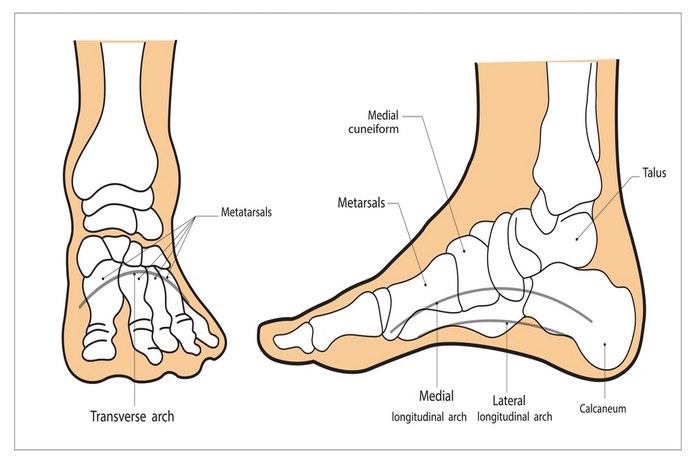The foot is one of the most complex structures in the human body. It has a total of 28 bones and many articulations. The foot contains the talus, calcaneus, navicular, cuboid, cuneiforms, metatarsals, phalanges, sesamoids, and soft tissues such as the plantar fascia. It comprises three arches, the medial arch, the lateral arch, and the transverse arch. These arches are connected by the ligaments, tendons, muscles, and joints. The foot can be subdivided into three sections: the forefoot, midfoot, and hindfoot. And doctors also talk about two sets of joints, the Choparts joint between the hindfoot and the midfoot and the Lisfranc joint between the midfoot and the forefoot.
An injury of the bones, articulations, soft tissues, or foot arches can lead to different types of foot pain that are divided depending on where they are located.
In general, foot pain diagnosis should include the same elements as diagnosing almost anything else. They are:

- A medical history: When the doctor is making a medical history, they will ask many questions to trace the cause of the pain. What have you been doing? How long have you had it? Have you already tried something to calm the pain? They will try to look for anything that connects your pain with trauma, metabolic disease, or another problem. A medical history is essential for the diagnosis because it helps the doctor know where to focus in the physical exam and which tests will be needed to diagnose your condition.
- A physical examination: The doctor will examine your body to see if there are any apparent problems. They will look at the different portions of your feet and may also evaluate your legs and other parts of your body. They will look for signs of swelling, changes in your skin color and lesions, tenderness, and so on. In foot pain, doctors need to look for signs of inflammation and hot spots in the tender and swollen area. The next step is to assess your ability to walk and your walking biomechanics. The form of your feet and your legs at rest is also essential, for example, in the case of flat feet. Strength tests and range of motion can also help diagnose certain conditions.
- Special tests: In some cases, doctors will perform certain maneuvers and tests to help them detect a specific foot problem. In the sections below, we will review some of them.
- Imaging and blood tests: You will probably have imaging tests done to ensurethat you do not have a fracture or severe damage to the bone. They are also helpful in looking for changes in the bone or in the structure of the bone itself. Blood tests will rule out other problems like infections and gout in case of high uric acid levels.

